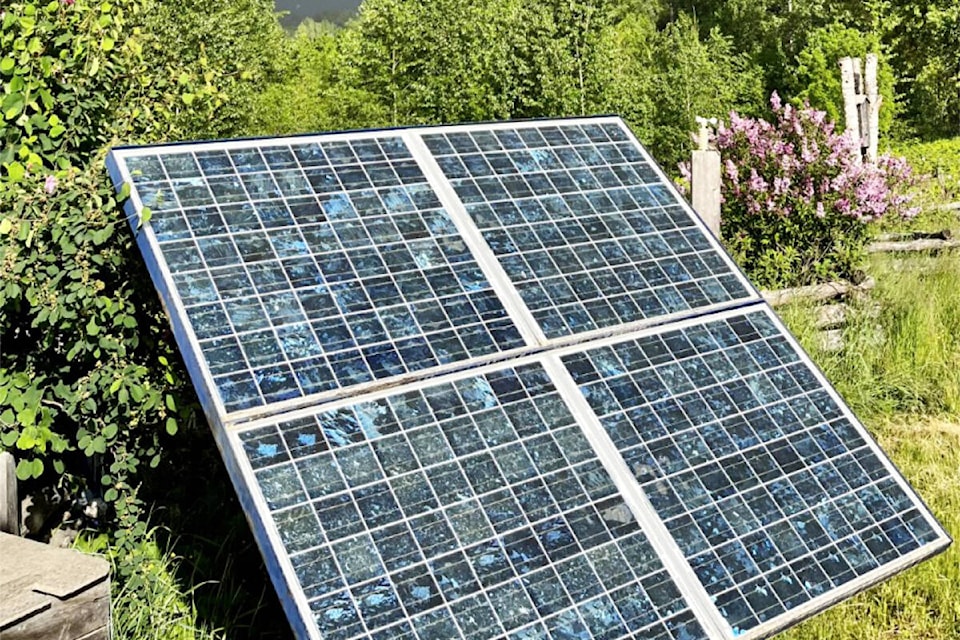It’s a romantic idea for many: living off grid on a sustainable farm, growing fresh fruits and vegetables and tending to a flock of sheep grazing the field.
In reality, it’s a huge undertaking.
Laurie Gallant and Bill Crosson decided to take on this lifestyle while – in their words – they were “harvesting the sun.”
In 2010, the coupled purchased the 50-acre ranch, run entirely off of solar panels, after it sat empty for six months. The solar panel batteries were depleted, and mouse droppings were in the cupboards. It needed a good cleaning, said Gallant, which she didn’t expect to be so difficult.
Gallant and Crosson met after she hired his band to play at her house party. As fate would have it, the two both dreamed of owning a sustainable farm in harmony with the land.
“Bill said to me, ‘Why don’t we see what properties are out there? Then, just for fun, let’s make a list of features that we are looking for.’”
Gallant went on to complete a course in permaculture, and before they knew it, they were looking for real estate for what would become Bulkley Canyon Ranch in New Hazleton.
“As soon as we walked through the gate, we thought it was amazing and that we’d love to live there. Six weeks later, we were signing papers,” Gallant told HARVEST. “[Our] farm is located on unceded Gitxsan territory, house of Spookw.”
Both working full-time and with little time to spare, the couple hired cleaners so that once they moved in, they could quickly unpack. However, upon arrival, they were surprised to find mouse droppings scattered throughout the kitchen and not a surface wiped.
As it turned out, the cleaners had shown up but promptly left after the light switches didn’t work and there was no running water.
“I didn’t think of [the power] because I hadn’t lived off grid before,” Gallant explained.
Cleaning was one feat; getting the solar panels running was another. After contacting a local renewable energy company and having the battery bank replaced, a 24V 20 kWh 875, they were able to get electricity and running water.
At the time of purchase, four panels were running at 155 kWh each. They still sit mounted off the ground and manually tilt east to west as the sun goes by.
In 2015, they installed six additional panels at 250 kWh each, clearing the tree line and catching that low winter light. Impressive for a ranch, considering the average home uses about 29 kWh daily. A third set of solar panels will be added in the future, allowing for an additional 5 kWh.
With gardens of perennials, fruits and vegetables, animals to feed, freezers to store food in, and a well to collect water from, power is a big issue on a self-sustainable farm. Gallant and Crosson noticed a lot of power was being used to collect water from their well, which sits 200 feet deep. They discovered the well’s pump was the wrong size, kicking up dirt and using more power than needed. So they changed the pump size, allowing for clean water and less power usage.
“The first winter was hard, but because we were a new couple and were passionate, we were excited to be on the property and with each other,” Gallant said.
They spent the first four years observing the characteristics of the land, discovering where the sunny spots were, what was growing naturally on the property, and of course, maintaining the solar panel batteries.
Gallant explained that the batteries must be equalized and water levels topped up to ensure efficiency.
“Say you had six bottles of beer and someone drank a little bit of each one. [Some are] full or empty. That’s what our batteries are like, so we try to top up each one [with distilled water] so they’re full and have equal energy.”
The ranch has two industrial-size battery banks, each weighing around 1750 lbs and about the size of a filing cabinet. They store up to 20 kWh and have a life expectancy of 15 to 20 years, allowing the ranch to add more solar panels in the future.
Gallant noted that it’s best to change the batteries from the bank all at once, similar to how your car tires will wear at different rates if you only change one, she said.
Living off grid isn’t for everyone, including one’s commitment to solar panels. Depending on your property, there may be more efficient ways to collect power, such as wind, Gallant said. The Bulkley Canyon Ranch is part of The Canada Greener Homes initiative, which funds properties up to $5,000 toward renewable energy sources. The program launched federally in 2021.
Gallant laughed when explaining how they hosted a house party over the winter and had to tell everyone the power was limited and lights would be off by 11 p.m.
For those who stuck around, headlamps were turned on and candles lit.
The couple keeps busy. Along with the upkeep of their ranch, they have sheep to care for, the food they’re growing, their farm-to-table catering business and at one point, working with BC Centre for Disease and Control, equipping families with skills such as food preservation, boiling water baths and dehydrating jerky.
“We are self-sufficient, but if not everyone can do this and get through a hard time, what does it matter? We only win if everyone wins,” Gallant said.
You can find Bulkley Canyon Ranch on .
READ MORE:
READ MORE:
kim.kimberlin@blackpress.ca
Like us on and follow us on



